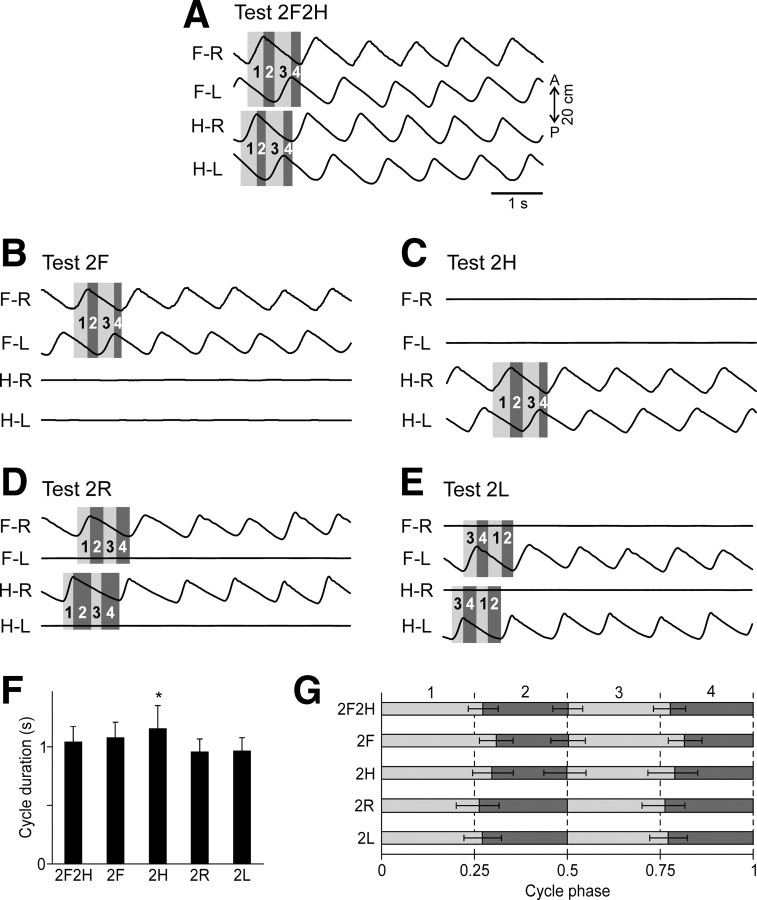Figure 3.
General kinematics of different locomotor tasks. A–E, Limb movements in different tests. Four periods were recognized in each locomotor cycle for each girdle: the right limb swing (1), the period after the right limb swing but before the left limb swing (2), the right limb midstance lasting while the left limb is in swing (3), and the period after the left limb swing but before the right limb swing (4). Because in Test 2R and Test 2L one of the limbs in each girdle did not walk, its swing duration was set equal to the swing duration of the opposite limb of the girdle and starting from the middle of the step cycle (D, E). F, The average cycle duration in different tests (mean ± SD, significant difference relative to Test 2F2H is indicated by an asterisk). G, The cycle structure, i.e., the parts of the cycle occupied by each of the four periods in different tests, averaging over all trials of each test (mean ± SD). Note that the periods were close to each other, but not equal to a quarter of the cycle. Despite this, each of the periods was normalized to one quarter of the cycle in the further analysis. The swing of left or right limb (periods 1 and 3) are shaded light gray, and the remaining periods (2 and 4) are shaded dark gray.

